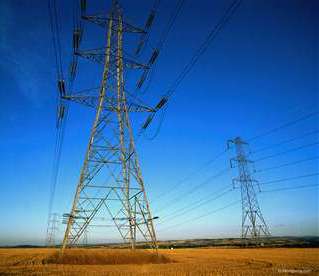
Kazakhstan Announces Plans to Exit Regional Electricity Network
Publication: Eurasia Daily Monitor Volume: 8 Issue: 12
By:

On January 6, Kazakhstan Electricity Grid Operating Company (KEGOC) announced its plans to exit the Central Asian power system. Kyrgyzstan and Uzbekistan’s inability to reach regional agreements with Kazakhstan on electricity supply over the winter is the main reason for KEGOC’s decision. Due to technical problems, both Kazakhstan’s southern neighbors were unable to operate in parallel, overburdening the system and causing temporary collapse of its north-south transmission connection (https://www.kegoc.kz/enpress_cter/news/2011/01/1198).
According to the Kyrgyz Energy Minister, Askarbek Shadiyev, Kazakhstan’s exit from the network will have negative implications for Kyrgyzstan. Specifically, northern Kyrgyzstan will lack sufficient power due to the limited transmission capacity, Shadiyev said (www.akipress.kg, January 10). Although the Kyrgyz leadership reacted cautiously to Kazakhstan’s plans, the chances that Astana will disconnect from the regional network remain minimal. More than one year ago, Uzbekistan announced similar plans which it was unable to implement (EDM December 3, 2009).
Both Astana and Tashkent’s announcements serve as signals that these states will take swift action in the future to increase their own independence from the Central Asian electricity network, rather than representing an immediate plan of action. According to regional experts, it will take years before either country can implement such plans.
Kazakhstan and Uzbekistan’s policy shifts reflect the predicaments stemming from the Soviet era planning of energy supplies in Central Asia when the upstream and downstream Republics were supposed to exchange irrigation water and hydropower for fissile fuel. While the upstream countries (Kyrgyzstan and Tajikistan) are able to supply peak load, downstream Kazakhstan and Uzbekistan provided the base load in the unified Central Asian power system. Kazakhstan and Uzbekistan, in turn, are capable of producing enough energy for domestic consumption mainly thanks to their thermal power plants (TPP’s). Tajikistan and Kyrgyzstan are better able to regulate electricity supplies during daily fluctuations in electricity demand because of their hydropower plants (EDM December 3, 2009).
Kyrgyzstan and Tajikistan help meet Kazakhstan and Uzbekistan’s demand during peak hours in winter, while receiving electricity from both states’ TPP’s during off-peak hours. However, in the absence of their own TPP’s, upstream countries are obligated to produce base load supplies even in the summer months. This system of electricity interdependence worked well during the Soviet era, however, it has since proved to be challenging. Once electricity demand increases during peak hours, downstream countries, especially Uzbekistan, would be bound to cut off supplies without the support of upstream countries. Entire oblasts and cities might suffer from energy shortages.
Uzbekistan, seeking greater independence from the regional system, has been willing to forcefully cut off electricity supplies to its population mostly in rural areas. Kazakhstan’s leadership is unlikely to take such risks. Furthermore, for several years Tashkent has been warning its neighbors of its decision to separate from the regional network and even constructed several transmission lines that would potentially increase the country’s independence. Astana, on the other hand, has been willing to pursue new compromises with its neighbors.
While Uzbekistan’s decision to leave the network would have mostly harmed Tajikistan, Kazakhstan’s plans would affect Kyrgyzstan. According to the Kyrgyz energy ministry, Bishkek TPP (which produces about 280 megawatts –MW) will be unable to meet the demands of northern Kyrgyzstan (consuming 1,900 MW, with Bishkek utilizing almost half of this volume). This will persist until the regional states learn ways to produce enough electricity and manage fluctuations in demand. Meanwhile, breaking away from the Central Asian electricity network would be difficult. Hydropower plants on Russia’s Siberian rivers help Kazakhstan balance its electricity supply and demand in its northern territories. However, Kazakhstan’s north-south power transmission does not have enough capacity to extend peak hour supplies from the north to southern oblasts of Shymkentskaya, Kyzyl-Ordinskaya and Alamtinskaya (https://www.kegoc.kz/enpress_cter/news/2011/01/1198).
Meanwhile, Bishkek has continued to experience blackouts in the past few days because the local TPP was not capable of meeting local demand after the connection to the southern TPP’s was for various reasons lost (www.for.kg, January 8). Kyrgyzstan’s domestic efforts to increase the efficiency of the power sector were mostly undermined by corruption and inefficient management. Although the new leadership has shown some interest in combating corruption in the hydropower sector, it is still far from taking radical measures to reform the sector (www.24.kg, January 11).




